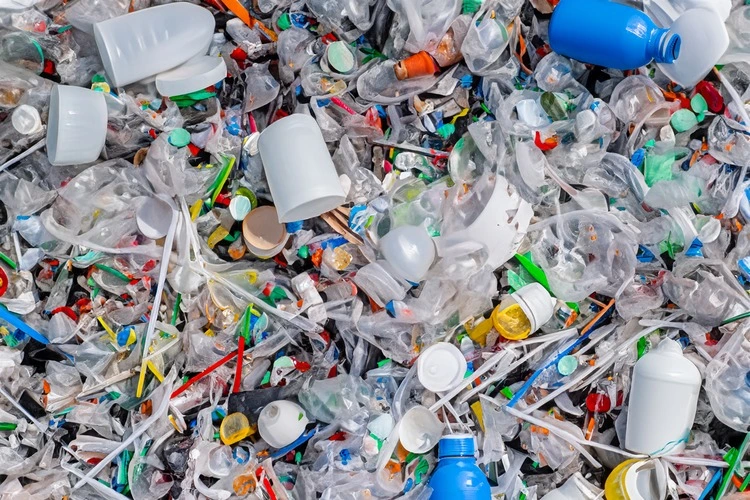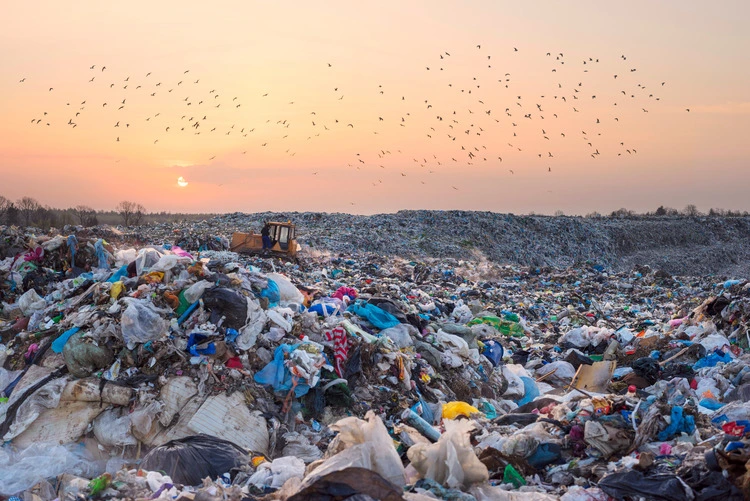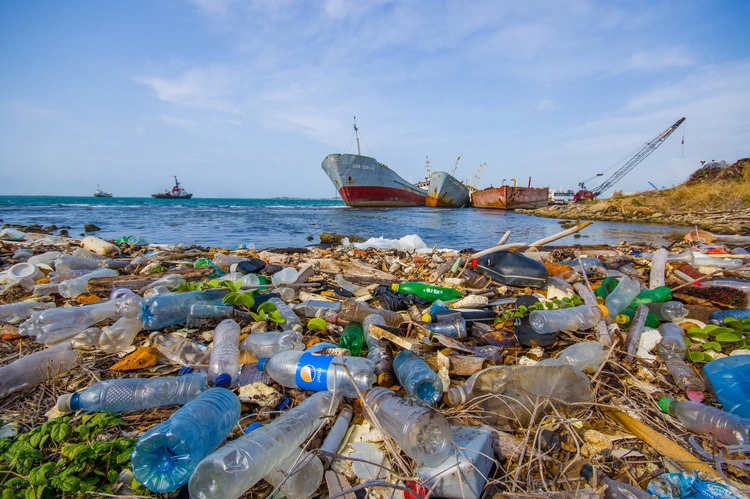
Once the plastic packaging leaves your hands, where does it go? Only 9 per cent ends up in a recycling facility…
By
Eight billion tonnes. That’s the amount of plastic the UN estimates has been produced globally since 1950. Remarkably, less than ten per cent of this has been recycled.
Dealing with the vast swathes of plastic produced across the world is no easy feat. The UN Global Plastics Treaty is an apt example: after two years and five rounds of negotiations, still no conclusive deal has been brought forward as countries struggle to settle on the details of what would be the first-ever global legally binding instrument to end plastic pollution. Until an agreement is made, plastic pollution continues to wreak havoc on environments both on land and in water.
Enjoying this article? Check out our related reads:
So, what is the path that plastic currently takes once it is disposed of? How much is actually recycled, and where does the rest go?
To clarify, the figures below come from Our World In Data’s latest figures on plastic disposal, and represent the percentage of annual plastic waste by disposal method:
Landfill – 49.84 per cent

Worldwide, the largest proportion of plastic waste heads to landfill. These areas of land are full of both household and commercial waste, and either work by dumping rubbish directly on top of the ground or in a hole within the soil.
The problem with plastic in landfills, unlike other types of rubbish, is that it does not decompose. It can take between 500-1000 years to degrade, but even then it will form microplastics that pose their own slew of environmental and health hazards.
Landfill sites also produce what is known as ‘landfill gas’, a mixture of methane and carbon dioxide – both planet-polluting greenhouse gases that lead to planetary warming – along with small quantities of other gases. One tonne of degradable rubbish produces around 400-500 cubic metres of landfill gas. For perspective, one of the largest landfill sites in the world, the US’s Mesquite landfill in Las Vegas, holds 50 million tonnes of garbage, representing a huge quantity of harmful greenhouse gases released.
Mismanaged – 22.45 per cent

More than 22 per cent of all plastic produced worldwide is mismanaged. Essentially, the word is an umbrella term used to describe any waste that is not recycled, incinerated or put in a sealed landfill. Plastic that is dumped in seas or open waters, disposed of in unsanitary landfills and dumpsites, or burned in an open pit all counts toward this category.
In waters, mismanaged plastic can result in serious harm to wildlife via ingestion or entanglement. Estimates suggest at least 100,000 marine animals die in this way each year, and around 1 million sea birds. So dire is the situation that by 2050, plastic will likely outweigh all fish in the sea.
Floating plastic debris in ocean waters can also have more insidious and unexpected effects on the environment. They can act as ‘rafts’ that invasive species then climb aboard, transporting them to new ecosystems and impacting biodiversity and food webs.
It’s not just animals that plastic mismanagement can wreak havoc on. The impact of plastic on human health is also now being investigated in greater depth, especially pertinent since humans ingest around 40 pounds of the material over their lifetime.
Studies have shed light on the variety of places in which microplastics – tiny bits of plastic less than five millimetres in length – are found: in human testicles, bottled water and even fruit and vegetables. Some research has shown that the levels of microplastics humans consume is consistent with cell death and can trigger allergic reactions, damage to cell walls, and oxidative stress (a precursor to diseases including cancer and cardiovascular disease).
All in all, the mismanaged plastics in our environment are causing damaging repercussions in the short and long term.
Incinerated – 19.05 per cent

Another means of managing plastic waste is through the process of incineration, where facilities (known as waste-to-heat energy facilities) burn plastic to generate a small amount of electricity. A large proportion of the world’s plastic ends up being treated in this way.
However, this method poses severe environmental risks that critics of incineration believe negate the electricity produced. Because plastic is almost entirely composed of oil and gas, the process of incineration is similar to carbon dioxide intensive as burning fossil fuels. For every tonne of dense plastic burned, more than two tonnes of CO2 is released into the atmosphere.
Scaled up, the environmental impact of incineration becomes even more stark. Taking the UK as an example – whose households throw away almost 100 billion pieces of plastic packaging per year – the annual incineration process produces a volume of CO2 equivalent to adding 350,000 cars to UK roads.
Burning plastic waste releases harmful chemicals into the air, including dioxins, furans and mercury, many of which are known carcinogens. That’s why, in some respects, incinerating plastic is thought of as dirtier than burning fossil fuels since it releases both planet-polluting carbon dioxide and toxic pollutants.
Harmful toxic ash residue is also left as a byproduct from incineration and often ends up in landfills, leaching chemicals into soil and groundwater.
Recycling – 9.29 per cent

Only around 9 per cent of plastic ends up being recycled each year. Of this figure, the most popular forms to be recycled are high-density polythene (found in beverage bottles and food containers) and high-density polyethylene (found in products including milk jugs and detergent bottles).
But surprisingly, recycling doesn’t really prevent waste as you might think – it simply delays disposal via incineration, landfill or other means. That’s because each time plastic is recycled, the quality of the material degrades. After one or two rounds of recycling, it is not viable for further recycling.
On top of that, potentially recyclable plastics may not even make it to the recycling facility. There are several hurdles to overcome before plastic waste can even get that far.
Firstly, plastic to be recycled must be free from contamination. Even something as inconspicuous as a food label or food remaining on plastic packaging can hinder a facility’s ability to recycle the product. Contamination can also arise from non-recyclable materials making their way into the waste stream through individuals putting the wrong products in recycling bins. From here, a knock-on effect can occur, damaging recycling equipment and in some cases, if the stream is too contaminated, all potential recyclable waste is rendered obsolete and sent to a landfill..
The second is profitability – it is often cheaper for a company to make a new plastic product than to carry out a recycling process since sorting and separating plastics is both time-consuming and expensive. Ultimately, this reduces the incentive to engage in more environmentally friendly practices.
Black plastics also pose a unique problem: their dark colour means infrared sensors in recycling plants are unable to detect their presence, so they are either incinerated or deemed as ‘residue’ to be put into landfill. Scientists have developed a method of tackling this problem – using a combination of sunlight and additives – but this has yet to be rolled out on a large scale.




